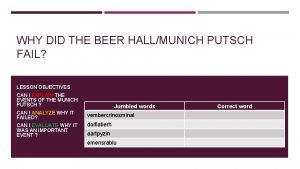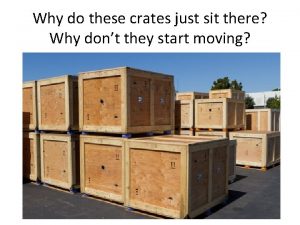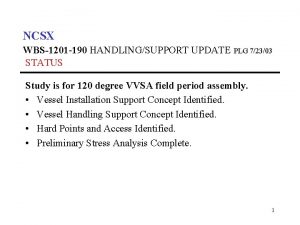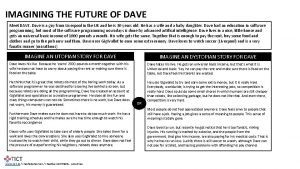Why Crates Dave Doughty 72303 Hall D Electronics






- Slides: 6

Why Crates? Dave Doughty 7/23/03 Hall D Electronics Review

Plays to our Strengths/Experience • JLAB has lots of experience with crates – Successful deployment of large crate system in Hall B • CODA handles this nicely • JLAB has built numerous complex boards – Trigger supervisor – all three halls – Trigger for Hall B – level 2 uses FEE backplane for communication – F 1 TDC • JLAB has experience with distributed pre-amps – Hall B – 35, 000 pre-amps – Some pain involving deterioration/access/replacement • Hall D Electronics group is fairly small Christopher Newport University

Simplifies Trigger Design • Boards in crates leads naturally to “crate sums” of energy, tracks • Use backplane for passing board sums to “crate summer” – If backplane exists – why not use for data concentration at the ROC? • Each calorimeter crate of ~256 channels needs 4 fiber links for trigger • Distribution of L 1 Trigger signal (for hit/energy/feature extraction) is simpler Christopher Newport University

Simplifies DAQ/CODA Design • Architecture of Hall D with crates is essentially that of Hall B – Slightly larger in crate count • CODA needs minimal changes – Handle event blocking • ROC-FEE change – Handle distributed event building – Managing crates and ROC doesn’t change Christopher Newport University

Simplifies Power/Mechanical • Only power to run all over is pre-amp power – Low power • Heavy-duty power (think FADC) now has tens of endpoints rather than thousands • Mechanical support is automatic – Except pre-amps which are light and small Christopher Newport University

Simplifies ADC/TDC Development • F 1 TDC developed for current use at JLAB will work with very minor modifications for Hall D • Flash ADC development in VME or CPCI will be easier to test/debug Christopher Newport University











